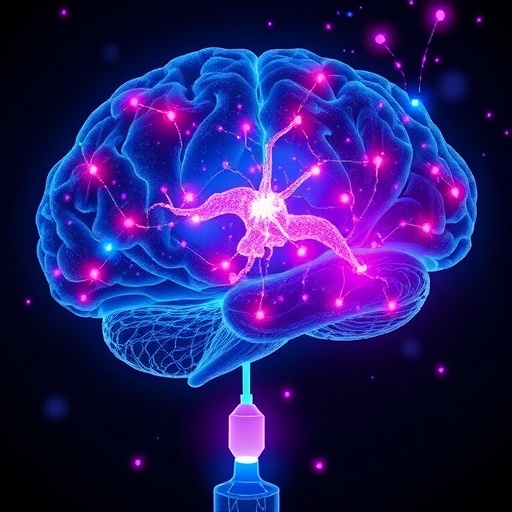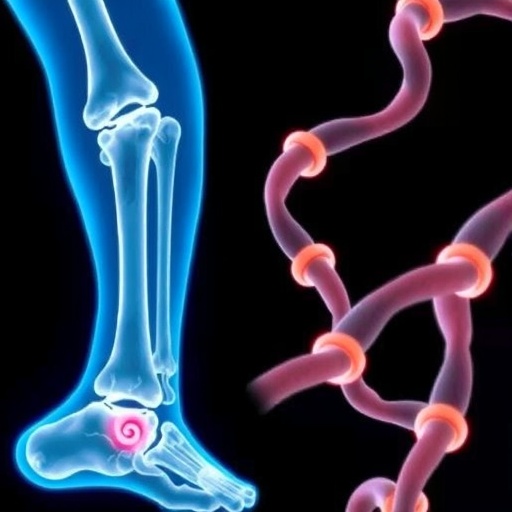Astrocytes, once considered mere support cells in the brain, have rapidly ascended to the forefront of neuroscience due to their integral role in modulating synaptic activity and plasticity. A groundbreaking study published this year unveils how astrocytic calcium (Ca2+) signaling acts as a gatekeeper in learning-related synaptic processes, specifically by preventing synaptic depotentiation during motor learning tasks. This new evidence dramatically reshapes our understanding of how astrocytes contribute to the maintenance and refinement of synaptic strength in the living brain, revealing their essential role in sculpting neural circuits underlying motor skill acquisition.
Motor learning is long known to involve dynamic adjustments in synaptic strength across neuronal networks. Activity-dependent synaptic potentiation, where synapses strengthen in response to repeated activation, is a fundamental process underlying memory and skill formation. However, equally crucial is the brain’s capacity to prevent inappropriate weakening or depotentiation of these synapses once potentiated, ensuring that newly acquired skills are retained rather than lost. The molecular and cellular mechanisms governing this delicate balance between potentiation and depotentiation during active learning, particularly in vivo, have remained largely enigmatic until now.
The study, conducted on the mouse motor cortex, monitored Ca2+ activity in astrocytes and dendrites of layer 5 pyramidal neurons during motor training. The researchers discovered that motor skill acquisition is accompanied by elevated astrocytic Ca2+ signaling as well as synaptic potentiation localized to the apical dendrites of these neurons. This elevated Ca2+ signaling is not merely correlative but plays a causative role in maintaining synaptic strength during the training period. When astrocytic Ca2+ was selectively reduced, an unexpected consequence emerged: instead of sustaining potentiation, synapses underwent depotentiation, leading to a failure in improving motor performance.
This finding underscores a previously unappreciated plasticity regulator—the astrocytic Ca2+ rises appear to act as a suppressor of synaptic weakening, effectively preserving the strengthened synapses necessary for learning. Importantly, this astrocyte-mediated constraint was highly specific, occurring only on a subset of dendrites exhibiting repetitive Ca2+ activity. The scenario suggests a model where astrocytic Ca2+ dynamics serve as a local modulator, gating synaptic efficacy by limiting excessive repetitive dendritic signaling that might otherwise prompt synaptic weakening.
Delving deeper into the cellular signaling mechanisms, the authors revealed that in the context of reduced astrocytic Ca2+, spines that were active prior to repetitive local dendritic Ca2+ activity experienced significant size reduction, a hallmark of synaptic weakening. This spine shrinkage was dependent on CaMKII, a well-known calcium/calmodulin-dependent protein kinase that modulates many synaptic function pathways. CaMKII’s involvement links dendritic Ca2+ transients to structural synaptic changes, suggesting that astrocytic Ca2+ indirectly regulates these intracellular pathways by controlling dendritic activity patterns.
Moreover, the study implicates purinergic signaling as a crucial mediator in this astrocyte-neuron interaction. Pharmacological activation of adenosine receptors, the downstream effectors of ATP released by astrocytes, suppressed both the repetitive dendritic Ca2+ activity and synaptic depotentiation elicited when astrocytic Ca2+ was inhibited. This elegantly demonstrates that ATP release and subsequent adenosine receptor signaling form part of the molecular feedback loop by which astrocytes limit excessive dendritic excitation, thereby stabilizing synaptic potentiation.
The convergence of astrocytic Ca2+ dynamics with adenosine-mediated signaling reveals a sophisticated neuro-glial communication axis essential for motor learning. It highlights how glial cells are not passive bystanders but active regulators that fine-tune the excitability and plasticity of neuronal networks in an experience-dependent manner. By tempering dendritic excitability through purinergic pathways, astrocytes preserve the functional and structural changes at synapses necessary for long-lasting memory traces during skill learning.
These insights extend to a broader conceptual framework that learning and memory are emergent properties of neuron-glia ensembles rather than neurons alone. Astrocytes, via Ca2+-dependent gliotransmitter release, can dynamically modulate synaptic activity on a fine spatial and temporal scale, affecting dendritic segments selectively during behavioral tasks. This refined synaptic governance likely contributes to the brain’s remarkable ability to discriminate relevant from irrelevant synaptic modifications during complex training paradigms.
The observed astrocytic control of dendritic repetitive activity also invites reconsideration of how synchronous neuronal firing relates to plasticity. While repetitive dendritic Ca2+ signaling may be essential for certain forms of synaptic strengthening, unchecked repetitive activation can paradoxically trigger depotentiation. Astrocytes emerge as critical arbiters, scaling dendritic activation patterns via Ca2+ signaling pathways to optimize synaptic gain and prevent loss of valid potentiated connections during motor skill acquisition.
From a translational perspective, these findings open new avenues for therapeutic strategies targeting astrocytic signaling pathways in neurological disorders where plasticity is impaired, such as stroke, neurodegenerative diseases, or motor dysfunction syndromes. Manipulating astrocytic Ca2+ or adenosine receptor activity may help restore normal synaptic function and promote rehabilitation outcomes by enhancing the stabilization of functional synapses during learning and recovery.
Future research is poised to further elucidate how astrocytic Ca2+ signals are precisely triggered by motor training experiences and how these signals spatially coordinate with specific neuronal ensembles undergoing plastic changes. Technological advancements in in vivo imaging and optogenetic modulation of astrocytes will be instrumental in parsing the timing and subcellular loci of this bidirectional dialogue between glia and neurons in behaving animals.
Equally compelling is the question of whether similar astrocytic mechanisms operate across other cortical areas or in different types of learning paradigms, potentially representing a universal principle of synaptic stabilization. The interplay among diverse astrocyte subtypes, their neurochemical milieu, and the heterogeneity of dendritic compartments will be important topics to address to fully understand the multifaceted role of astrocytes in brain plasticity.
Collectively, this pioneering work redefines astrocytic calcium signaling as a critical neurobiological substrate for maintaining learned motor behaviors by preventing synaptic depotentiation. By safeguarding potentiated synapses from excessive dendritic repetitive activity via ATP-mediated adenosine receptor pathways, astrocytes ensure that motor learning translates into lasting performance improvements in the animal model. This paradigm shift elevates astrocytes from supportive accessory cells to central modulators of learning and memory, reshaping the landscape of cognitive neuroscience.
The evidence that glial cells actively orchestrate the fine balance of synaptic potentiation and depotentiation opens new frontiers in understanding brain function under physiological and pathological conditions. These findings invite the neuroscience community to embrace a more integrated view of brain plasticity—one that seamlessly incorporates the dynamic and purposeful involvement of astrocytes in shaping neuronal network function during behavioral adaptation.
As research progresses, these insights have profound implications not only for motor learning but for the comprehensive understanding of how cellular and molecular interactions within the brain culminate in the integrated processes of cognition, skill acquisition, and memory consolidation. The role of astrocytic Ca2+ in preventing synaptic depotentiation exemplifies the complexity and sophistication of neuro-glial partnerships critical for functional brain plasticity, marking an exciting chapter in neuroscience discovery.
Subject of Research: Astrocytic calcium signaling and its role in synaptic plasticity during motor learning
Article Title: Astrocytic Ca2+ prevents synaptic depotentiation by limiting repetitive activity in dendrites during motor learning
Article References:
Lai, B., Yuan, D., Xu, Z. et al. Astrocytic Ca2+ prevents synaptic depotentiation by limiting repetitive activity in dendrites during motor learning. Nat Neurosci (2025). https://doi.org/10.1038/s41593-025-02072-4
Image Credits: AI Generated
Tags: astrocytes in neural circuitsAstrocytic calcium signalingdepotentiation prevention in synapsesin vivo learning processeslong-term memory formationmotor cortex calcium dynamicsmotor learning mechanismsneuronal network adjustmentsrole of astrocytes in skill acquisitionsynaptic activity modulationsynaptic plasticity in the brainsynaptic strength maintenance






